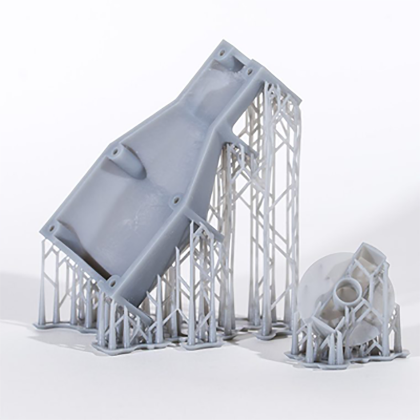Unlock the Secrets of SLA Prototype Services: Transform Your 3D Printing Game!
In the realm of modern manufacturing and design, SLA (Stereolithography) prototype services have emerged as a game-changer in the world of 3D printing. These services enable businesses and creators to produce high-quality prototypes quickly and efficiently, catering to the increasing demand for rapid prototyping across various industries. Whether in automotive engineering, consumer electronics, or medical device innovation, SLA technology provides a level of precision and detail that is hard to match. As we delve deeper into this article, we will explore the nuances of SLA prototype services, their benefits, and how they can revolutionize your 3D printing endeavors.

Understanding SLA Prototype Services
SLA prototype services involve the use of specialized 3D printing technology that utilizes a laser to cure liquid resin into solid plastic. The process begins with a digital model created via CAD software, which is then sliced into thin layers. The SLA printer constructs the object layer by layer, using a focused laser beam to harden the resin precisely in the desired shapes. This method stands apart from other 3D printing technologies, such as Fused Deposition Modeling (FDM) or Selective Laser Sintering (SLS), primarily due to its superior resolution and ability to produce smoother surface finishes. Unlike FDM, which extrudes filament, or SLS, which uses powder, SLA’s liquid resin approach allows for intricate details and complex geometries, making it ideal for high-fidelity prototypes.
Benefits of Using SLA Prototype Services
One of the standout advantages of SLA prototype services is their exceptional precision. SLA technology can achieve tolerances as tight as ±0.1 mm, which is crucial for applications requiring strict dimensional accuracy. Another significant benefit is the smooth surface finish that SLA prototypes provide; this can reduce the need for extensive post-processing, saving both time and cost. The rapid turnaround times associated with SLA printing are also noteworthy. With the ability to produce prototypes within hours, businesses can accelerate their product development cycles, allowing for quicker testing and iteration. Industries such as automotive and aerospace leverage these advantages to create functional prototypes that are tested under real-world conditions, while consumer product designers utilize SLA prototypes to visualize and refine their concepts quickly. Additionally, SLA's versatility in material options, including clear, flexible, and heat-resistant resins, further enhances its applicability across diverse fields.
Choosing the Right SLA Prototype Service Provider
When seeking an SLA prototype service provider, it’s essential to consider several factors to ensure you receive quality results. First, look for a company with substantial experience in SLA technology and a strong portfolio showcasing their work. A reputable provider will also have access to the latest SLA printers and materials, which can significantly impact the quality of your prototypes. Customer support is another critical aspect; a provider that communicates effectively and offers guidance throughout the process can help alleviate any concerns. Additionally, reviewing case studies can provide insight into the provider's capabilities and the types of projects they specialize in. This information can be invaluable in ensuring that your chosen service aligns with your specific prototyping needs.
Common Applications of SLA Prototyping
SLA prototyping finds its applications in a multitude of industries, proving to be a versatile solution for various projects. In product design, creators often utilize SLA prototypes to develop and test new consumer products, allowing for quick iterations based on user feedback. Architectural models also benefit from SLA’s precision, enabling architects to present intricate designs and spatial relationships to clients effectively. In the medical field, SLA prototypes are employed to create detailed anatomical models used for surgical planning and education. Personal anecdotes from friends in the design industry highlight how they have successfully utilized SLA prototypes to refine product concepts and present ideas to stakeholders, underscoring the technology's practical relevance. The ability to visualize complex designs in physical form helps bridge the gap between imagination and reality, making SLA a valuable asset in the prototyping landscape.
Key Takeaways on SLA Prototype Services
In summary, SLA prototype services represent a significant advancement in the world of 3D printing, offering unparalleled precision and rapid turnaround times that cater to the needs of various industries. As we’ve explored, the benefits of using SLA technology extend beyond mere aesthetics; they can enhance product development, streamline workflows, and foster innovation. As businesses and creators continue to seek ways to optimize their prototyping processes, incorporating SLA services can be a strategic move that opens up new possibilities. Whether you’re a seasoned professional or a budding entrepreneur, considering SLA prototype services for your next project could lead to exciting breakthroughs in your design and manufacturing efforts.



